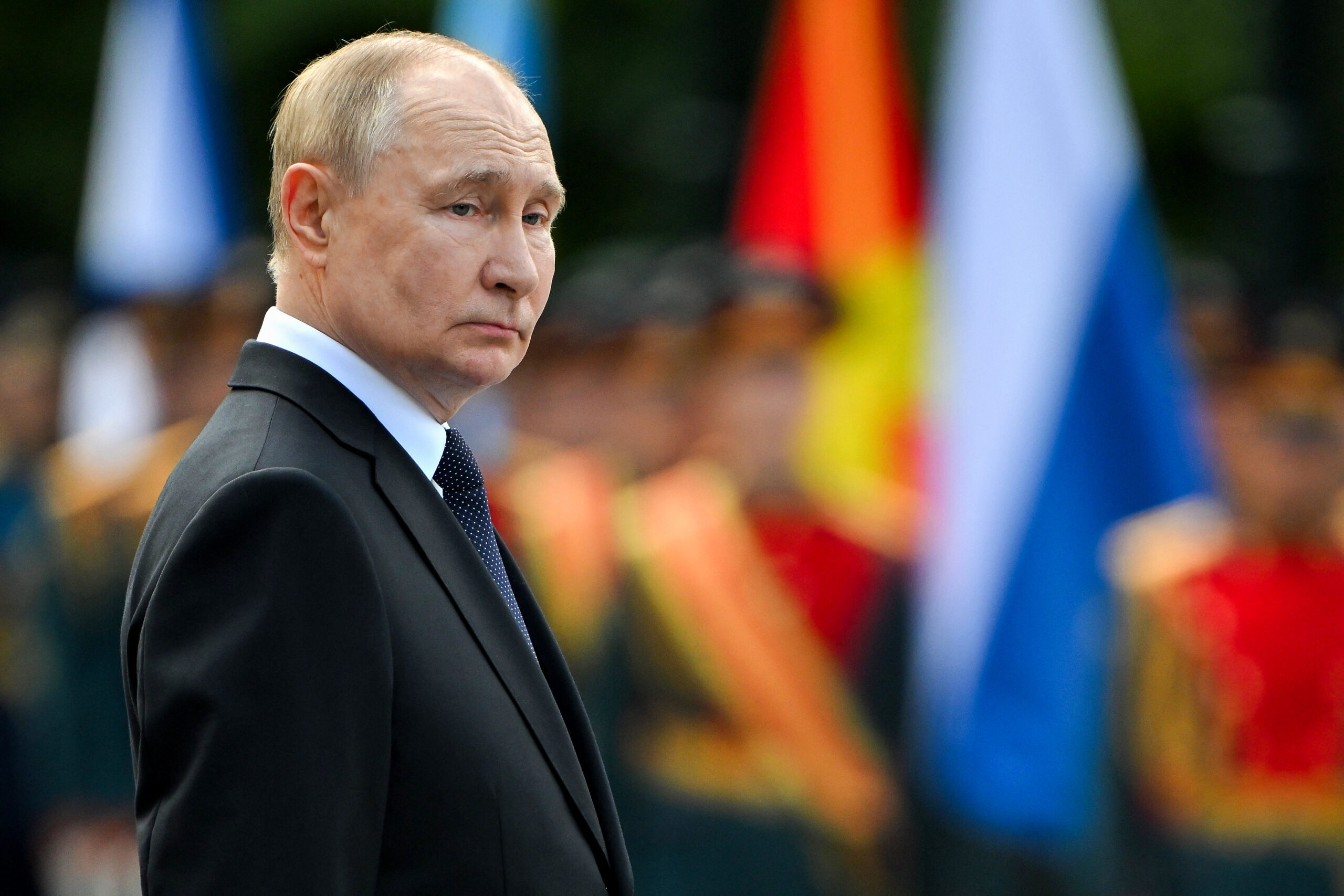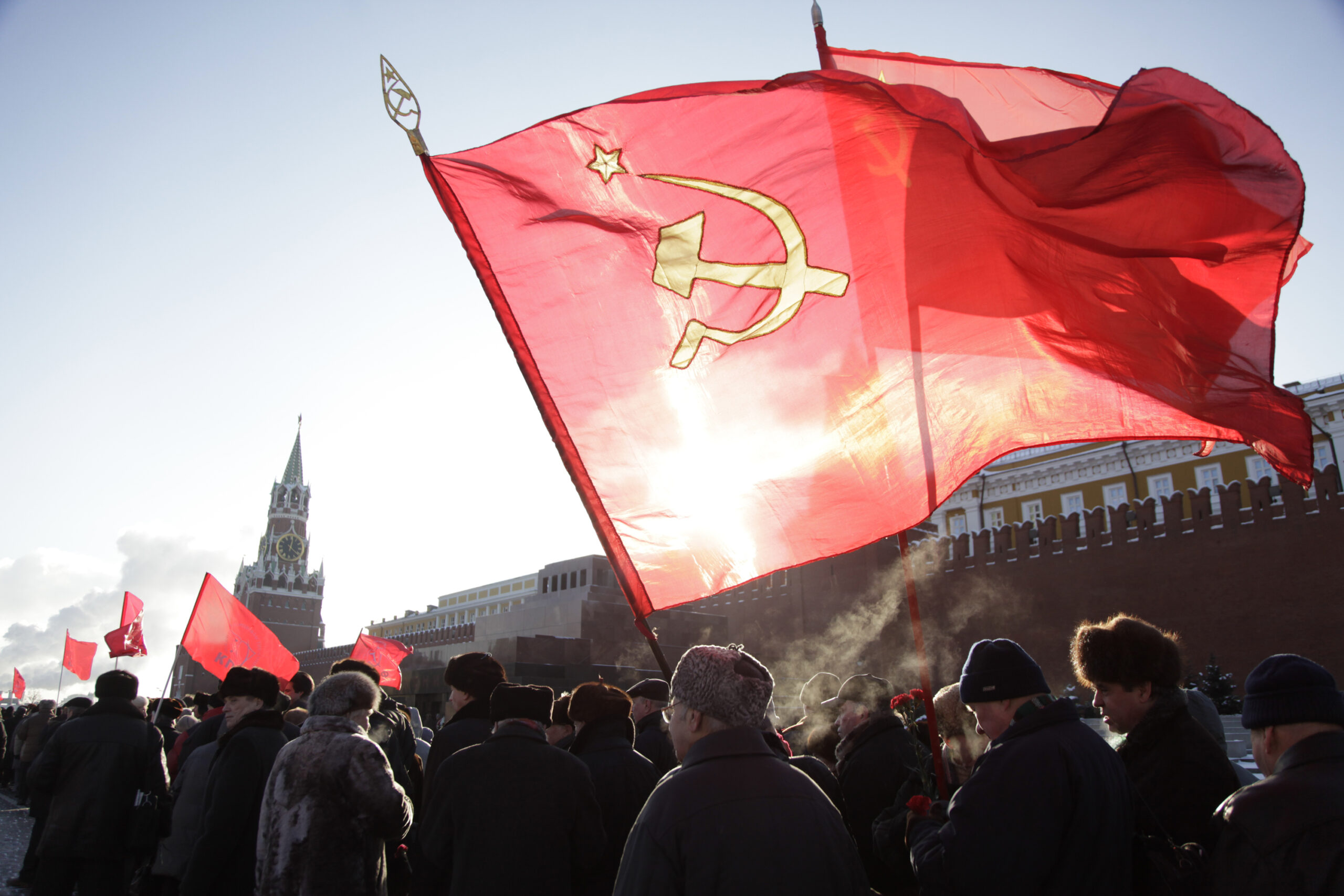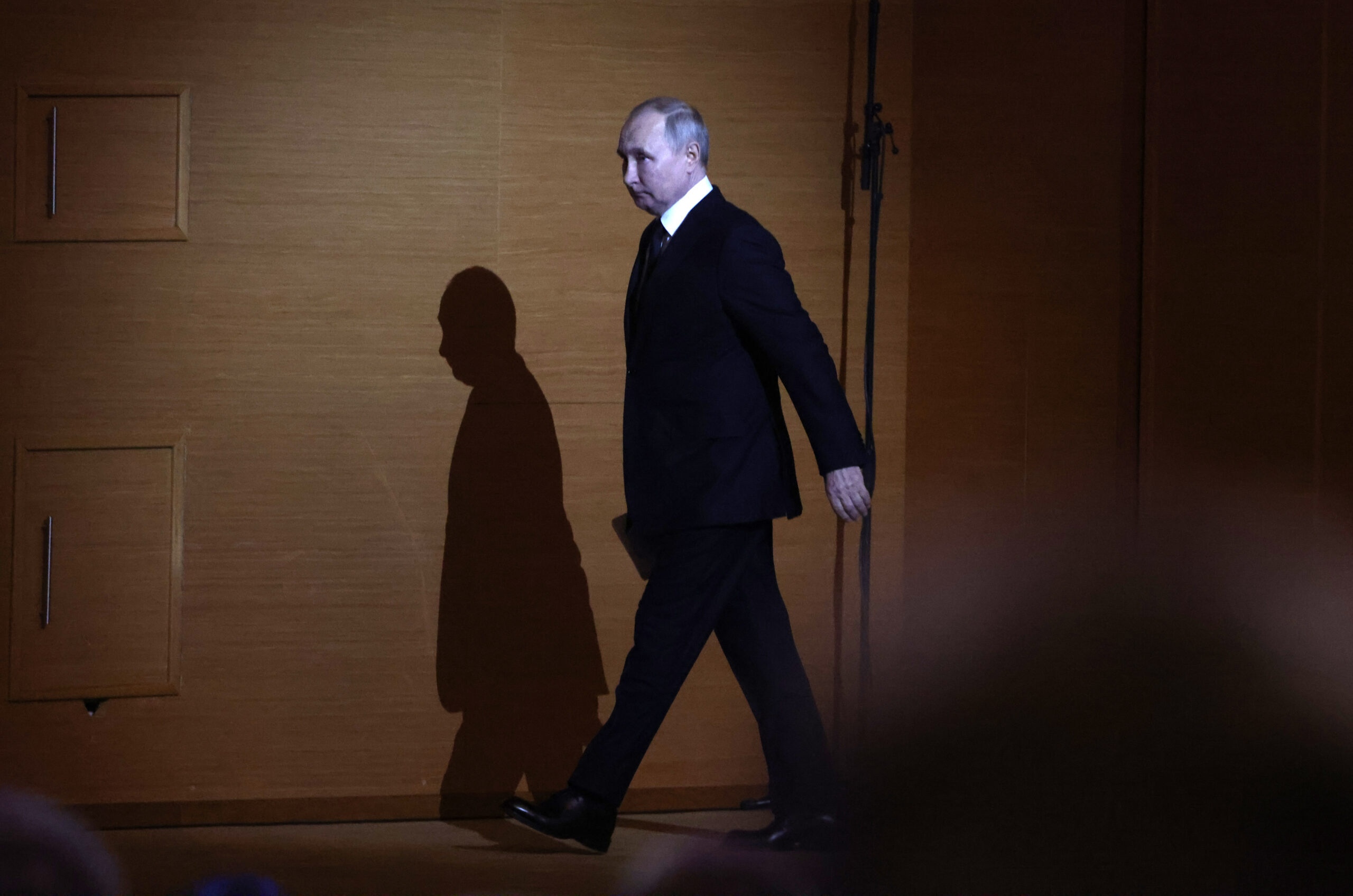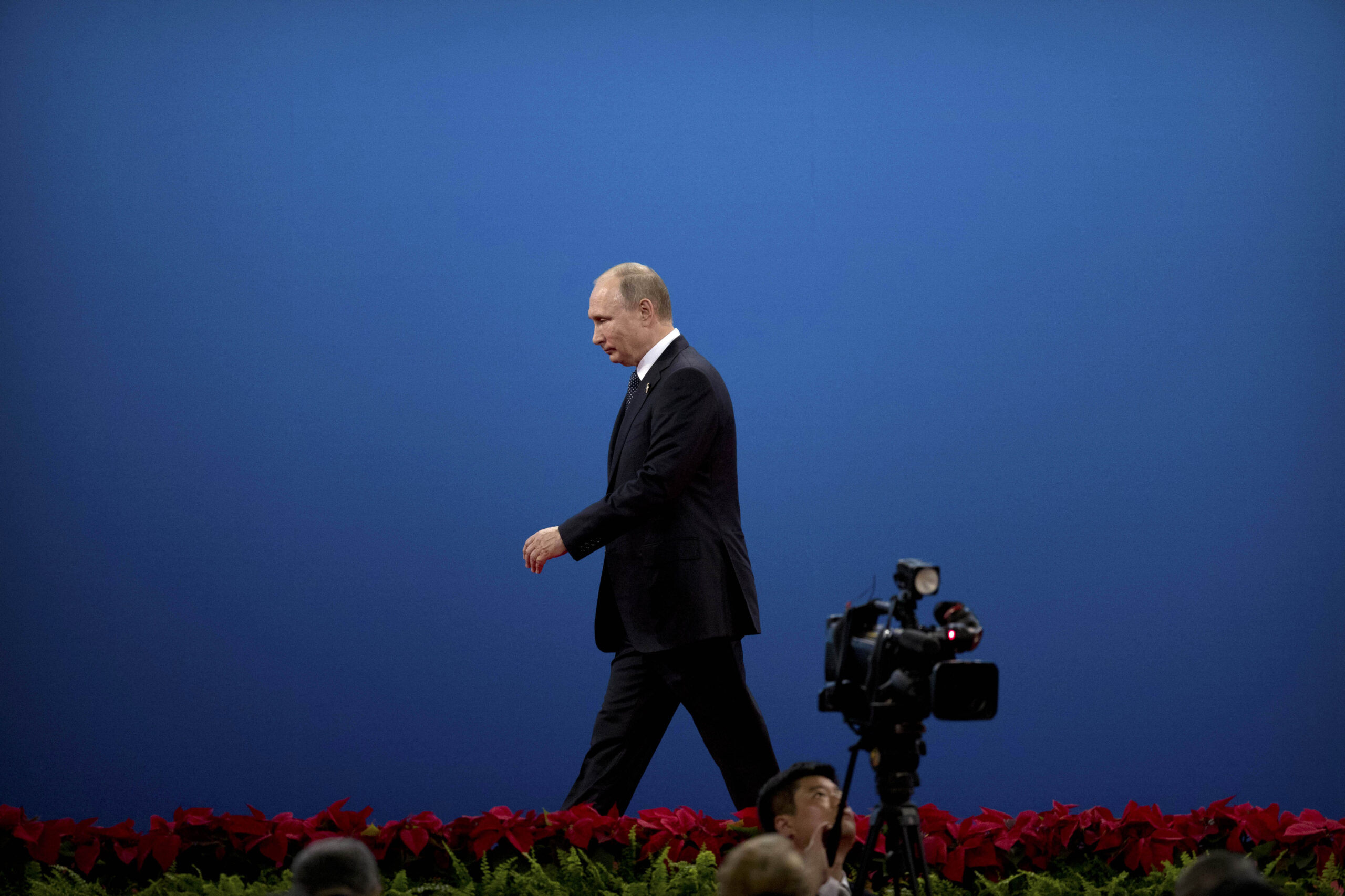
Vladimir Putin wants to stir patriotic fervor for his war in Ukraine. But most Russians don’t think the war is worth the cost, and it’s putting the Kremlin in a bind.
February 2025
As negotiations over the war in Ukraine become likelier, Russian president Vladimir Putin faces hardening domestic constraints that the Trump administration should use as a valuable bargaining chip. Although the Ukrainian Army suffers from increasingly dangerous shortfalls in manpower and materiel, a key obstacle to Putin’s subjugation of Ukraine — and to any future assault on the sovereignty of other states in the region — is the refusal of much of Russian society to give active support to the war. While Putin has stripped Russians of political agency, Russian society retains a significant measure of autonomy from state regimentation and indoctrination. This autonomy, while limited, helps protect a patriotic culture grounded in a desire for civic and socioeconomic development, the potential building blocks of political liberalization. It also enables much of Russian society to question Putin’s claim that Ukraine and the West pose an existential threat to the Russian state and society. These factors, coupled with society’s rational assessment of the human and material cost of the war, help explain the serious limitations of the Kremlin’s efforts at patriotic mobilization behind the “special military operation.”
Russians express strong support for Putin and hold the United States and NATO largely responsible for the war. Yet a long-term opinion survey in Russia led by American scholars confirmed in early 2024 that society is increasingly divided over the conflict. According to another survey, in September 2024, only 23 percent of respondents said that they believed their fellow Russians were definitely willing to fight in Ukraine. And a November 2024 poll found that 57 percent favored a Ukraine ceasefire, while only 35 percent backed continued warfare. War fatigue does not adequately explain the desire for peace. In September 2022, just seven months after Putin launched his full-scale invasion, respondents in a survey by Russia’s Levada Center supported peace talks over more fighting by 48 to 44 percent. These and other data challenge the prevalent view that most of Russian society either approves of Putin’s aggression or is lost in apathy.
The interaction of three variables — cost, culture, and threat perception — helps to explain many Russians’ preference for peace. Much of Russian society finds that the war is not worth the perceived stakes. In a late-September 2024 survey, 47 percent said that Russia’s invasion of Ukraine had produced “more harm than benefit,” and cited human suffering and the loss of life. The “more benefit” share was only 28 percent, with a focus on newly acquired territory and the protection of Russian-speakers in the Donbas. Significantly, the response shares had been nearly equivalent in a May 2023 survey. Why did the share of the public making negative assessments go up so sharply? One reason is the waning influence of social-desirability bias: Russians who dislike or are indifferent toward the war no longer feel so bound to engage in performative patriotism.
Culture, Identity, and Patriotism
The desire for peace draws strength from the second variable, that of Russian political culture, and particularly the moderate patriotism and nationalism which interpret love of country in largely pacific ways. Analysts and scholars often maintain that Russian neoimperialism blocks the emergence of liberalization and democratization. Yet much of Russian society disagrees with Putin that Russia as a great power should seek first stronger armed forces and a militarized society as a prelude to external conflict and expansion. Instead, most Russians believe that domestic socioeconomic and civic development should be the state’s priority.
In both recent polls and those from before the war, strong majorities have favored civilian development over hard power. A 2024 survey found the vast bulk of respondents (83 percent) hoping that the Kremlin would focus on domestic problems, while a slender majority (51 percent) wanted to see stable relations with the West return. Another 2024 poll found only 7 percent feeling that Russia should regain political “leadership” of post-Soviet space. When asked in a May 2024 survey what ideas they most associate with Russia, just 7 percent chose military achievements. And only a small fraction viewed the war with Ukraine as a defining event in their lives.
Writing after the February 2022 invasion, Lev Gudkov, the former director of Moscow’s Levada Center, observed that while most Russians see their homeland as a great power, they do not share the aggressive neoimperialism of the siloviki (literally, “the strongmen,” meaning the current and former elites of the military and security services): “The main feature of a ‘Great Power’ [for most Russians] is to achieve the well-being of the people [and] to live according to the same standards as in ‘normal countries’ (that is, ‘the West’). And this desire has only intensified over the past 20 years.”
Similarly, many Russians object to Putin’s militarized conception of patriotism. As was common before the war, most Russians view patriotism as a collective effort to achieve civic and socioeconomic well-being for society. In 2023, fully 68 percent of Russian respondents opted for a definition of “authentic” patriotism as the “desire to do something useful for the country and the people; to change life for the better in your community, where you live.”
The longstanding desire for domestic development is especially inimical to support for the war. Scholars identify the degree of intragroup consensus prior to the onset of conflict as the “most important factor affecting the [subsequent] cohesion” of a group once war breaks out. As Gudkov observes, the divisions between society and the state on how to understand Russian identity considerably pre-date the Ukraine invasion. The data suggest that wartime rally effects and state propaganda have not significantly altered society’s preferences.
Threat Perception and State-Society Relations
The third and final variable, the level of threat perception, intervenes to magnify or diminish the effects of cost and culture on society’s willingness to fight. Against the Kremlin narrative of a threatening West, most Russians do not view the war as an existential struggle to defend the Russian state, regime, or people. According to theories of social conflict, a group (whether a tribe or a nation-state) is more likely to embrace collective defense if most members perceive a danger to be encompassing and immediate. But if members see a threat as limited or indeterminant, they will be less inclined to engage in self-sacrifice, believing the stakes too low to justify high costs in the form of deaths, degraded life chances, and violated cultural norms.
Pointing to a modest level of threat perception, a February 2024 Levada survey found that a majority (69 percent) did not perceive the need for a second round of military mobilization. In an August 2024 Levada poll, 41 percent supported the continuation of military action in Ukraine, and of these, about two-fifths (42 percent) simply felt that it was necessary to “finish what has been started.” Few respondents who supported the war perceived a dire external threat: Just a tenth saw a need to “protect and secure Russia,” while only 5 percent saw the war as a just struggle against the West and NATO, the Kremlin’s favorite explanation.
Why do many Russians fail to view external threats in the same way as Putin and the siloviki? Although Russian society lacks political agency, it does possess sufficient autonomy to evaluate much of the state’s messaging. The Kremlin’s capacity to shape mass attitudes falls short of what its Soviet predecessor was able to do. Socioeconomic, political, and cultural transformations since the USSR collapsed have shortened the state’s reach into society. Today’s political elites also recognize a self-interest in enabling societal autonomy: They know that the Soviet system’s totalism was self-defeating and prefer burden-sharing and load-shedding. Russians still rely on the state, particularly if they hold public-sector jobs, but much less so compared to what was the case in Soviet times. Challenging stereotypes of paternalism, close to 60 percent of Russians believe that the success of their long-term plans depends more on their own initiative than on state support.
While Russians view the external environment and particularly the United States as a source of danger, the intensity of this perception should not be overstated. Even amid highly strained U.S.-Russia relations, popular anti-Americanism evokes feelings which, while negative, still stop short of outright fear and alarm. In keeping with this, recent survey data suggest that a majority of Russians want their country to keep its political and cultural distance from the West but also reject the Kremlin’s narrative of existential threat. The most common preference set calls for restoring normal economic and scientific relations while bringing sanctions on Russia to an end. Judging by surveys conducted just before the war, a majority of Russian elites who are not siloviki share these sentiments.
It is noteworthy that the Kremlin inadvertently weakens its meta-narrative of external threat by simultaneously stressing domestic normality. This contradictory messaging stems in large part from the Kremlin’s concern that much of Russian society would oppose state efforts, such as a new military draft, that demand considerable personal sacrifice. For now, Putin seeks to insulate most Russians from sustained, direct contact with the conflict, reducing society’s perceptions of threat.
Threat Perception and Political Tolerance
Perceptions of extreme threat can generate bursts of patriotic self-sacrifice but also intolerance as the population closes ranks behind the leadership. Putin claimed shortly after the start of the invasion that patriotic Russians would ostracize opponents of the war, spitting them out like “gnats.” Yet many Russians remain at odds with this regimented, aggressive understanding of patriotism. Despite most Russians’ unwillingness to engage in open dissent, 51 percent in a late-2023 survey believed that the government should not curtail antiwar speech, while only 35 percent felt that it should. Even those who described themselves as strong Putin supporters backed permitting antiwar speech by 46 to 41 percent. Just as important, many respondents remained neutral (44 percent) or positive (18 percent) toward antiwar demonstrations in Russia.
This stance toward political “voice” extends to “exit” behavior. In their assessment of Russians who fled the country due to fear of the draft in 2022, almost half (48 percent) of respondents were indifferent or neutral (Levada Survey, p. 162, table 16.6.6). Two years later, in September 2024, more than half of respondents (51%) expressed “understanding” of Russians who avoided military service in Ukraine, while only 27 percent condemned such behavior (the remaining respondents declined to answer). Similarly, most Russians refuse to criticize fellow citizens for a perceived lack of patriotism: In a May 2023 survey, 63 percent overall (and 81 percent of young people) said that patriotism should be a matter of personal choice, undercutting the Kremlin’s demands for unwavering collective loyalty. Only a third believed that every Russian must be a patriot.
Putin’s Bind
Given that Russia’s weak and divided society faces a powerful and repressive state, public opinion by itself is unlikely to compel the Kremlin to end the war. Yet widespread negative attitudes toward the conflict still place Putin in a bind, threatening his efforts to cripple Ukraine’s sovereignty and commitment to democracy. Putin needs troops to feed into the attrition combat with Ukraine, but he will not compel Russians to take up arms in large numbers, fearing the backlash that this would arouse — similar to the one that shook the country in late 2022. His solution so far has been to rely on well-paid contract soldiers. When asked in late 2024 whether they would support a forced mobilization if one was needed to sustain the special military operation, 49 percent of respondents said they would rather see hostilities stop. Only 29 percent favored a new mobilization. Remarkably, 49 percent also said that they would support a decision to withdraw Russian troops from Ukraine and start truce talks without achieving any of the special military operation’s initial goals. A third of respondents rejected such a decision.
If Ukraine and its allies continue to bar the path to a decisive Russian victory, Putin faces unfavorable options: He can stick with the war of attrition; he can force what would surely be a highly unpopular mass mobilization of Russians; or he can accept peace talks that would likely require him to make concessions. Attrition’s cost in men and materiel will inevitably grow. This situation may become dire for Putin as Russians increasingly reject voluntary service as contract soldiers, threatening a source of manpower that he cannot replace with North Korean troops.
Trying some form of mass mobilization would be a huge and desperate gamble. Putin’s wager would be that he could use the fresh troops to win quickly, before the widening of cleavages within Russian society and between society and the state wrecked his gambit and left him in a weaker posture both on the battlefield and at the bargaining table. Alternatively, Putin may calculate that a peace agreement, even one requiring what many Russians would view as unacceptable concessions, will be preferable to the unpredictable political turbulence that society’s reaction to a new draft would cause. In each of these scenarios, Russian society is not a passive bystander but a key actor limiting Putin’s options.
While some Western leaders fear that Putin may eventually attack other European countries, including NATO members, the weakness of societal support in Russia likely places such a goal, or even the subjugation of Ukraine, beyond the Kremlin’s reach. Perhaps as important, the probable emergence in post-war Russia of a struggle between hard-liners and moderates will be shaped in part by popular and elite perceptions of the outcome (win or lose) and the costs (in lives and life chances) of the war. If Putin cannot plausibly claim a decisive victory, the costs borne by society are likely to be “more determinative than [the] outcome,” leading many Russians to conclude that Putin and the hard-liners are responsible for a dramatic failure in foreign policy. In this case, Russian society will help weaken the authoritarian hold of Putin and the siloviki on Russia. The United States can increase the probability of this outcome by providing Ukraine with greater military and economic support that would fortify its position on the battlefield and in any negotiations to end the war.
The views expressed in this article are those of the author and do not necessarily represent the official policy or position of the United States Army, U.S. Department of Defense, or U.S. government.![]()
Thomas Sherlock is professor emeritus of political science at the United States Military Academy (West Point) and author of Historical Narratives in the Soviet Union and Post-Soviet Russia: Destroying the Settled Past, Creating an Uncertain Future.
Copyright © 2025 National Endowment for Democracy
Image credit: Sergei Guneyev/POOL/AFP via Getty Images
|
FURTHER READING |
||

Why Russia’s Democracy Never Began |

The Putin MythVladimir Putin’s reputation as a skillful leader was buoyed by years of economic good fortune. But when his regime faltered, his rule quickly descended into the fearful, repressive, and paranoid state we see today. |

Why Does the Kremlin Bother Holding Sham Elections?Everyone knows that Russia’s election is a fraud. The problem is no dictator ever feels safe enough, and Putin thinks even a fake election will signal to his cronies that he’s still in charge. |
